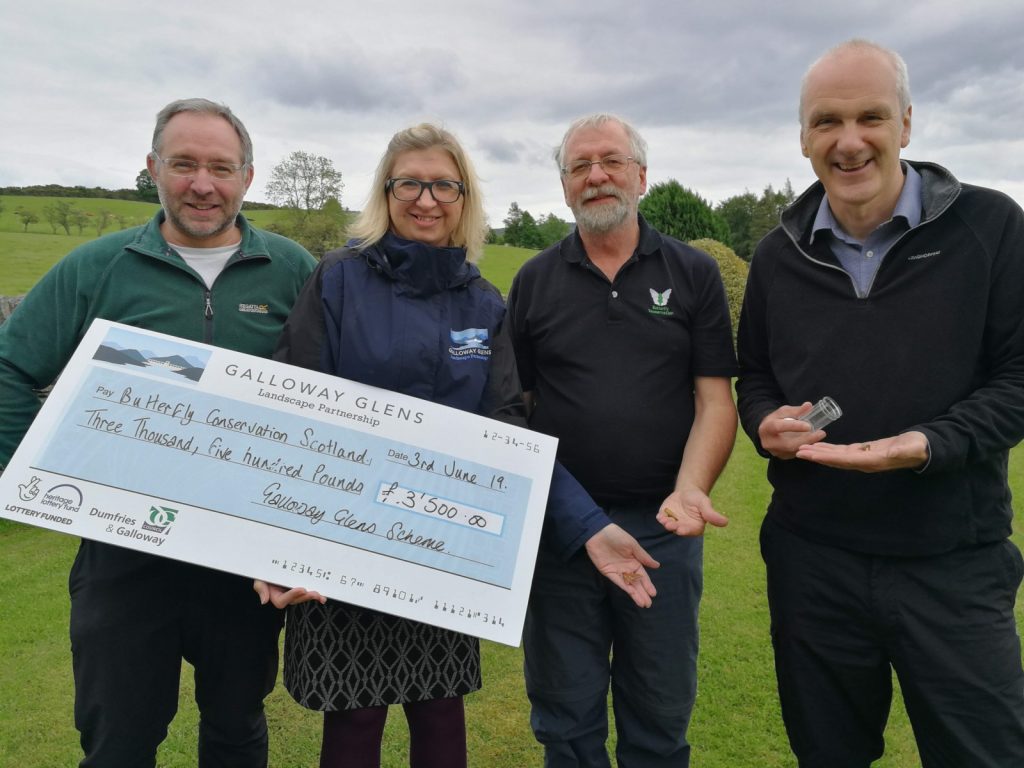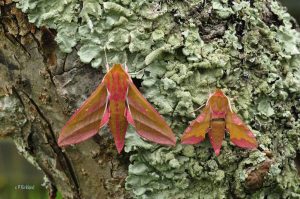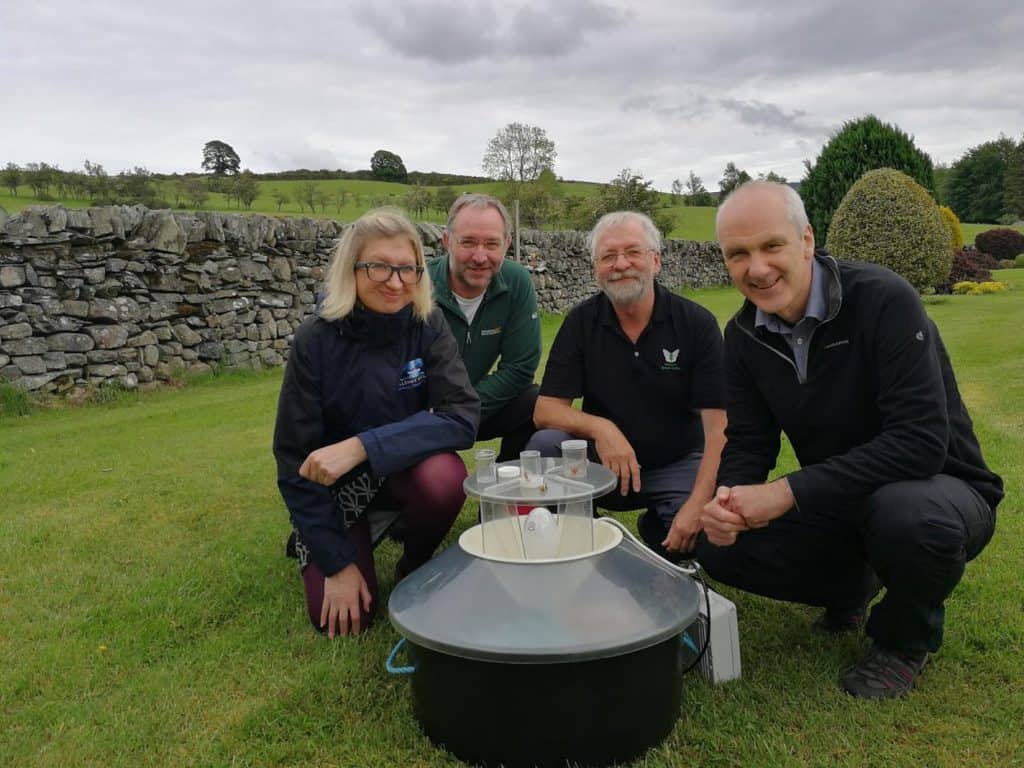This week saw the launch of the ‘Moths at Home’ project in which the charity Butterfly Conservation will be working with a whole range of partners and people to demonstrate the beauty and diversity of moths that live in their own gardens across the Galloway Glens area. The project will also explain the ecological importance of moths, how gardens can be managed for their benefit, and how recording moths can benefit their conservation, whilst being fun to do.

The average garden in Galloway will support more than 200 species of moth, many large and colourful, but the average garden owner is often totally oblivious to their presence. The project will be running community moth recording events across the Galloway Glens region in partnership with South West Scotland Environmental Information Centre (SWSEIC).
At each event participants will be provided with a moth trap and training on how to set it up. They will take it away to their own garden or community site. The next morning, they will return with their traps to a central point, and the live catch will be released unharmed, having been identified by local volunteer experts.
A full species list and report will be prepared and fed back to all participants and other interested parties, and records submitted to the SWSEIC, contributing to the knowledge, protection and legacy of biodiversity in the Galloway Glens and across Dumfries & Galloway.
If you would like to understand more about our local moth population and want to get involved by taking part in the Moths at Home project, please contact Peter Norman on [email protected].

The ‘Moths at Home’ project has been supported by a grant of £3’500 through the Galloway Glens ‘Our Heritage’ Small Grant Scheme. Jude Crooks from the Galloway Glens Team met Paul Kirkland, Director of Butterfly Conservation Scotland and Peter Norman, SWSEIC project Officer to kick the project off.
Paul Kirkland, Butterfly Conservation (Scotland) Director said: –
Moths form a crucial part of our ecosystem, helping to pollinate wildflowers when they visit for pollen or nectar, and in turn being vital food for birds, bats, spiders and beetles. They are also fascinating and beautiful. Moths have a much wider range of lifestyles than butterflies, many using native trees and shrubs such as oak, birch, hawthorn and willow, while others feed on native wildflowers, ferns and even lichens. Gardeners can encourage them in many ways- check out the Butterfly Conservation website for ideas!
Peter Norman, SWSEIC Project Officer, said: –
People are amazed to discover that there is a world of moths living on heir doorstep. Many moths are just as big, bright and colourful as butterflies, but because they mostly fly at night, are seldom seen. The average garden will have 100-200 different species, and we would expect to catch 50-100 species on any one night. The best gardens have a range of flowers, shrubs and trees, with as few external lights as possible, but even small gardens can make great moth habitats.
Jude Crooks, Galloway Glens Scheme Administrator said:
The Moths at Home project is an exciting opportunity to connect people to our wildlife heritage by exploring and learning about the vast array of different species of moth and their important role in supporting biodiversity within the Galloway Glens. Many thanks as always to the National Lottery Heritage Fund Scotland for supporting the Galloway Glens Scheme.






